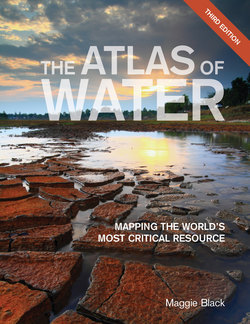Читать книгу The Atlas of Water - Maggie Black - Страница 21
На сайте Литреса книга снята с продажи.
ОглавлениеWater Shortage
The spectre of water shortage is less a global phenomenon than one threatening particular regions and localities. In areas under-endowed with rainfall or rivers, a combination of ever-increasing demand and, in some cases, less reliable rainfall, exacerbates the prospect of water shortage. Water use grew at more than twice the rate of population increase in the last century. On current trends, by 2030 global freshwater withdrawals will exceed prospective reliable supplies by 40 per cent, with the disparity in some places being more than 50 per cent. At the same time, in some settings, water infrastructure and river diversion to fill reservoirs, irrigate crops and support industrialized lifestyles have already manipulated natural watercourses to the limits of possibility. An increasing number of important rivers – including the Colorado (USA and Mexico), the Indus (India and Pakistan), the Huang He (China), the Rio Grande (North America and Mexico), and the Murray (Australia) – run dry, or almost do so, before they reach the sea for large parts of the year. Groundwater is also being pumped at rates that deplete aquifers and normal underground recharge into rivers and lakes. Erratic weather patterns associated with climate change, in the form of multi-year droughts or altered monsoon behaviours, are also increasing the prospects of water shortage in vulnerable areas.
Q 2 Water’s Unequal Distribution
24
